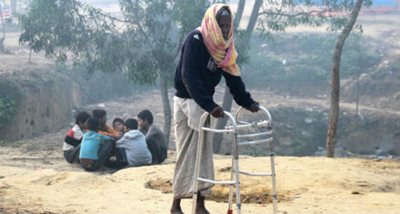.jpg.aspx;.pdf;?width=400&height=266) According to the United Nations, 134 million people will need humanitarian aid in 2018, but only 97.4 million people were selected to receive assistance – this means millions of people are being left behind. The report examines why this is happening, and what can be done to reach those who otherwise would be without assistance.
According to the United Nations, 134 million people will need humanitarian aid in 2018, but only 97.4 million people were selected to receive assistance – this means millions of people are being left behind. The report examines why this is happening, and what can be done to reach those who otherwise would be without assistance.First of all, it can seem surprising that in 2018 there are still barriers to reaching people with this kind of aid – so how is this happening? The report lists five reasons people are being left behind:
- Out of money: There just isn’t enough money available to aid groups and organizations to meet growing needs.
- Out of reach: There are situations that make it hard or even impossible for humanitarian workers to reach those who need their help, such as conflicts.
- Out of sight: Identifying where people are, particularly in remote areas, makeshift settlements, and urban slums and how many of them need help can still be a challenge in 2018.
- Left out of the loop: There are situations where the help that is offered is not the help that is needed, or that assistance is being offered in a way that communities can’t use. Some vulnerable and marginalized groups can be unintentionally left out when offers of assistance aren’t communicated effectively.
- Out of scope: Sometimes, when a disaster happens people feel like it’s not their problem, or it can be hard to draw attention to situations known as silent disasters – when something that is happening just doesn’t get the strong media exposure that other things do.

Clearly, there are barriers that make it hard to reach everyone who needs help – but the report also lists ways that these challenges can be overcome. The suggestions include improving how data is collected and shared amongst humanitarian organizations, urging governments to prioritize bringing support to the hardest to reach population, investing in crisis preparedness and more. The report also urges for greater investment in local humanitarian organizations, which may already be present in areas experiencing disasters and emergencies, and already understand local customs and needs.
Read the report, and learn more about the challenges and solutions to delivering humanitarian aid in a changing world.
Related stories:
- What is a silent disaster?
- To reach the most vulnerable, especially vulnerable people must be remembered
- World Disasters Report looks at the importance of building resilience
- World Disasters Report: Focus on local aid

